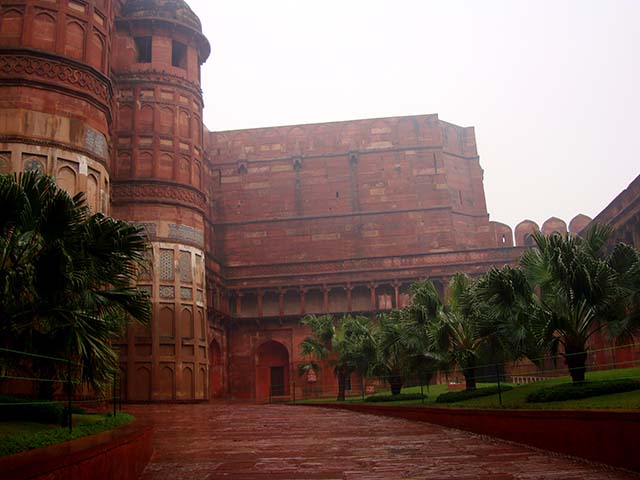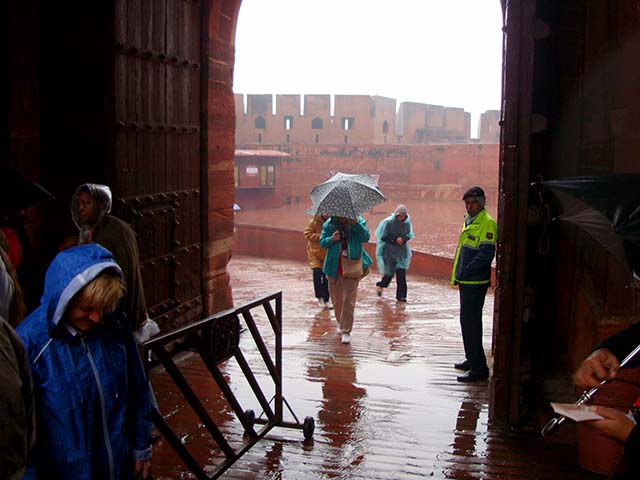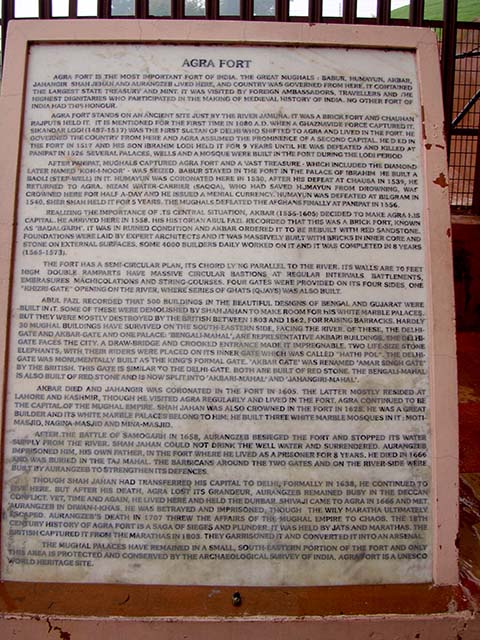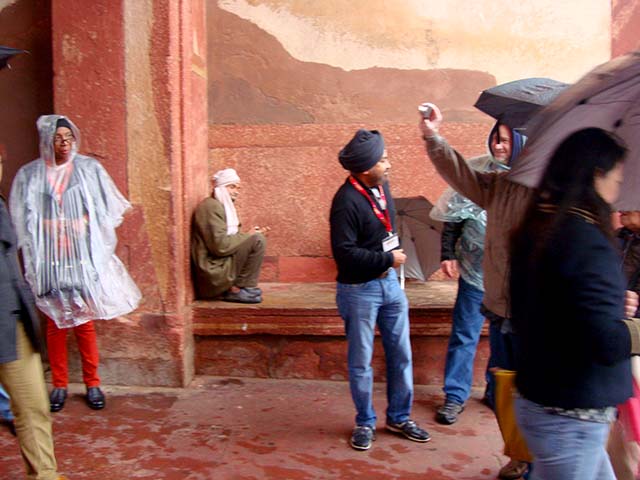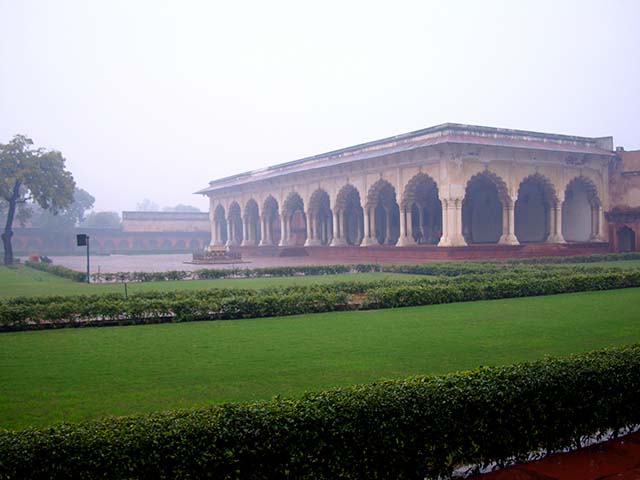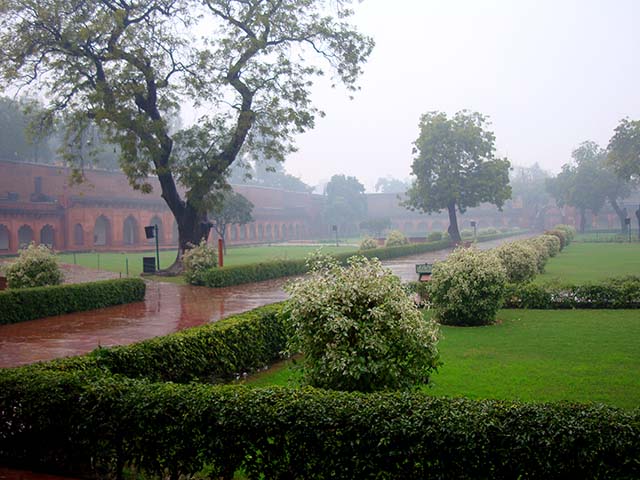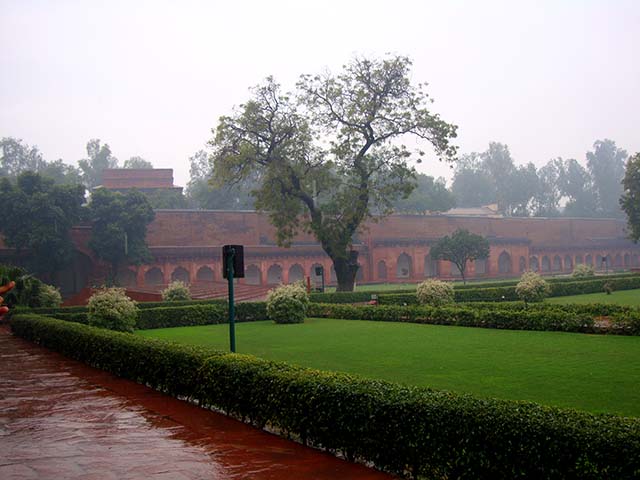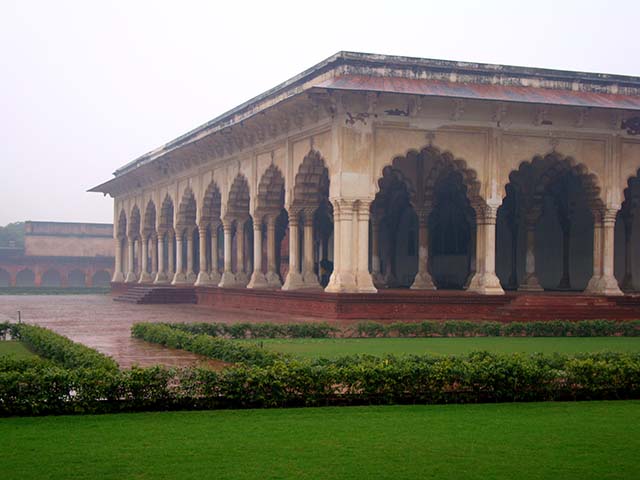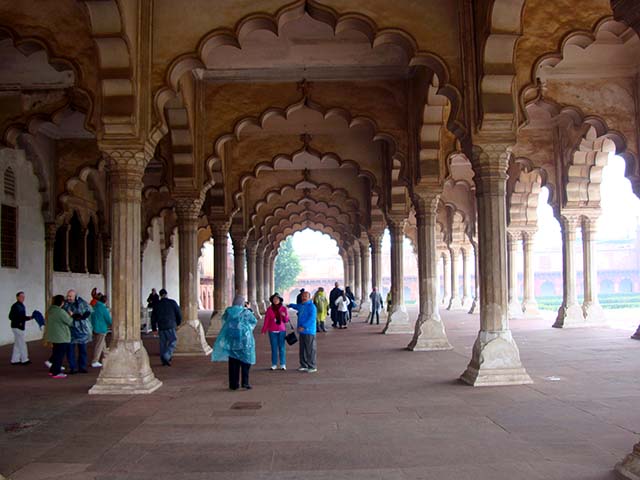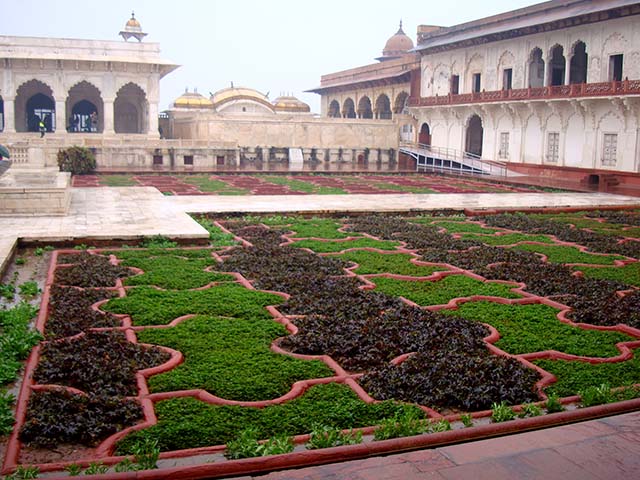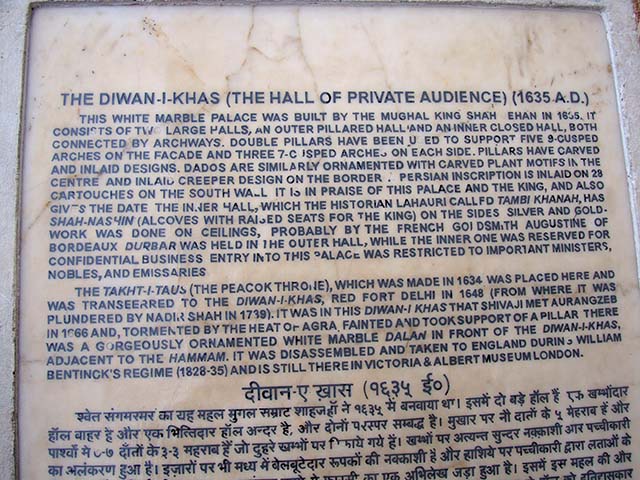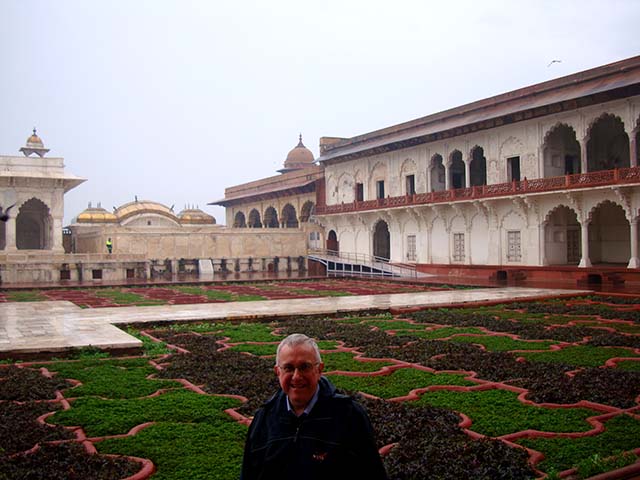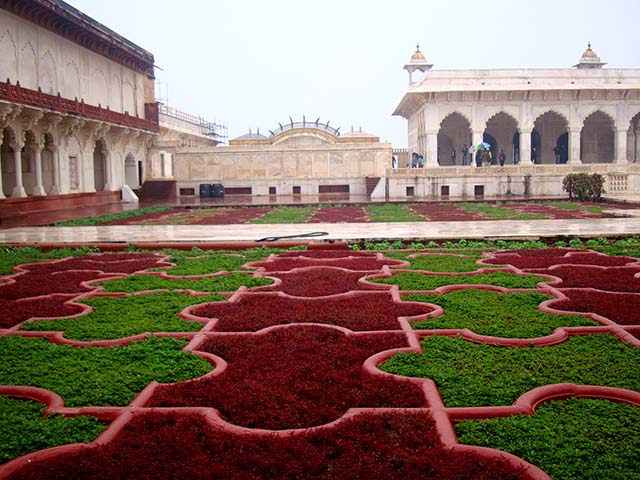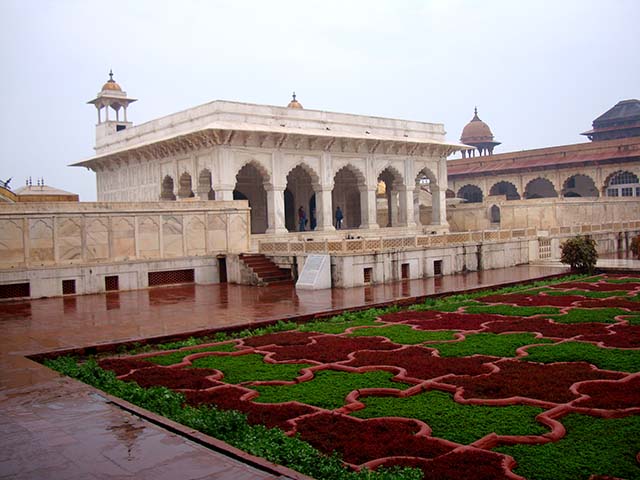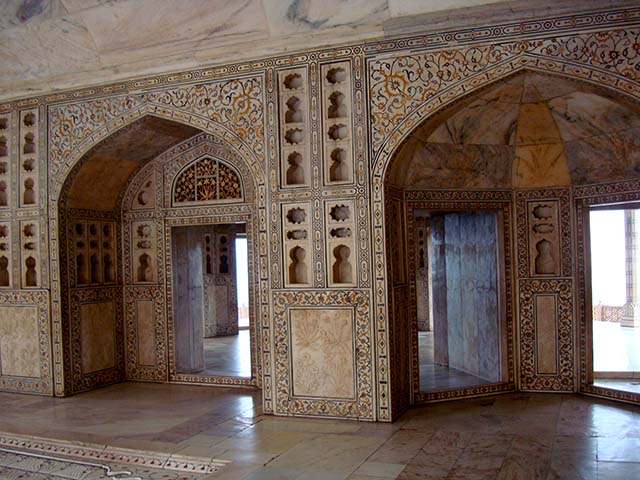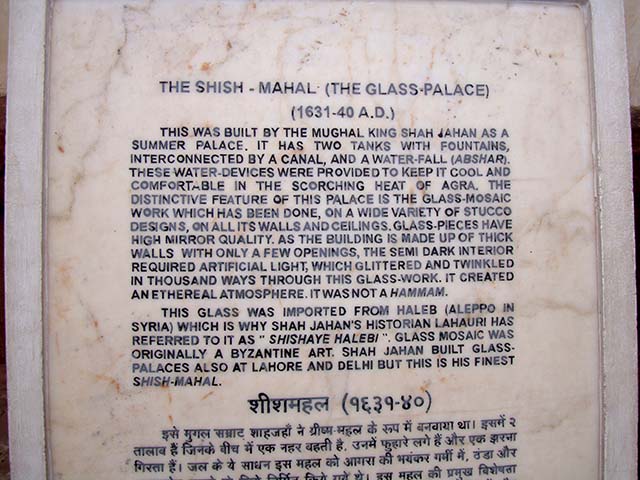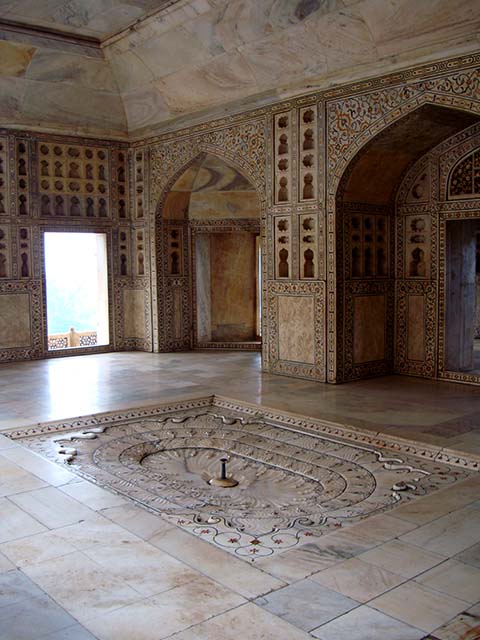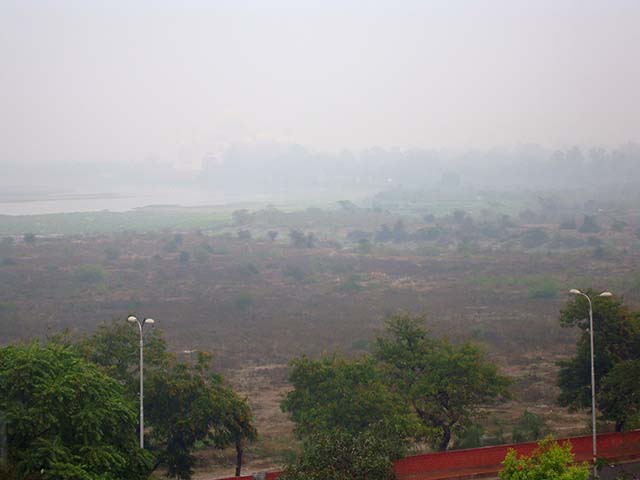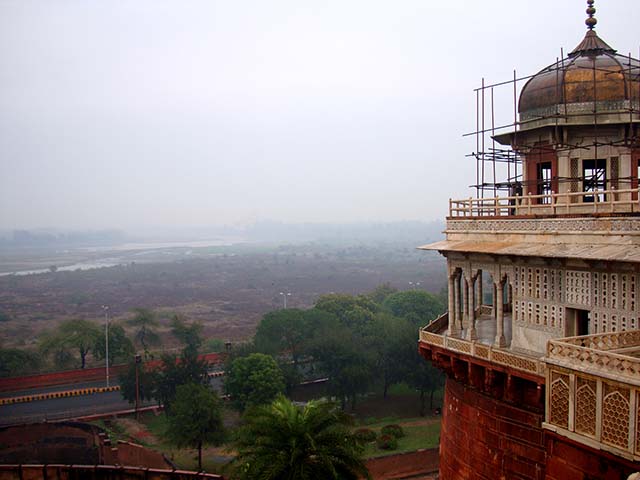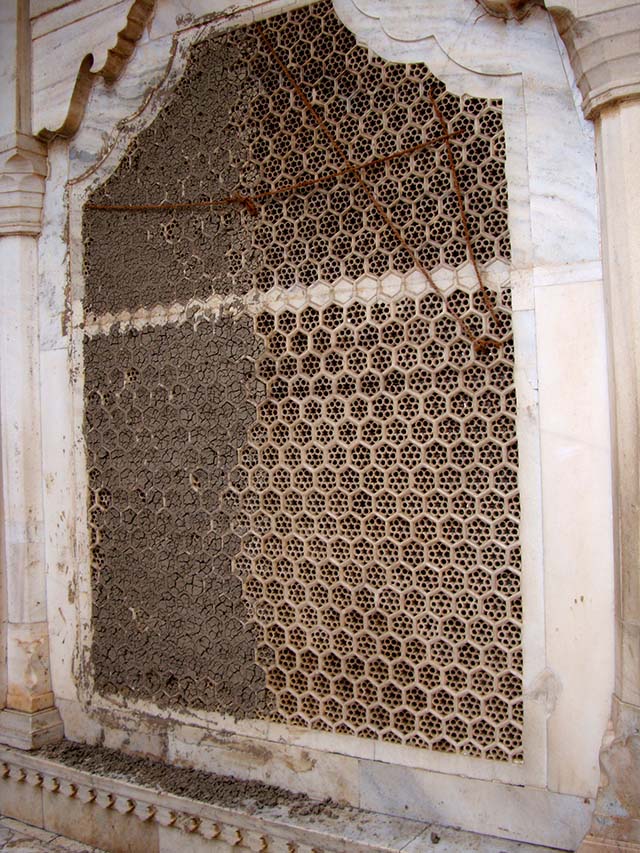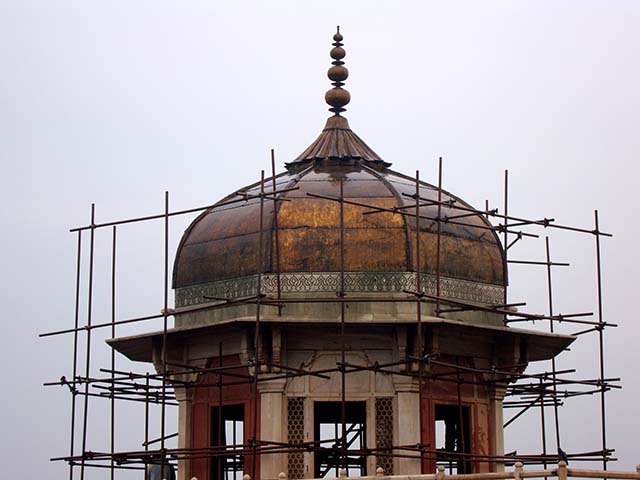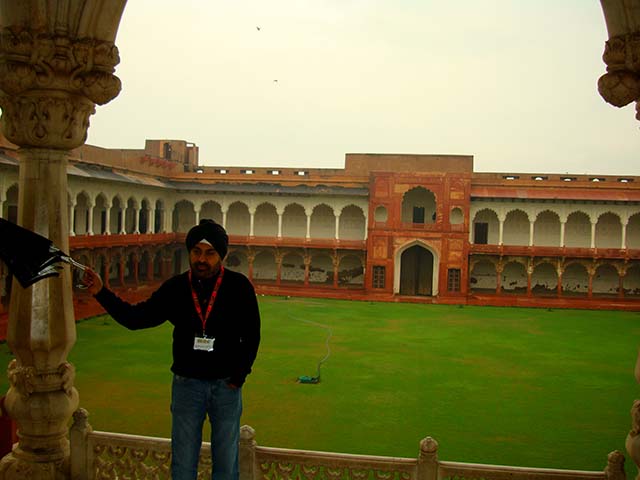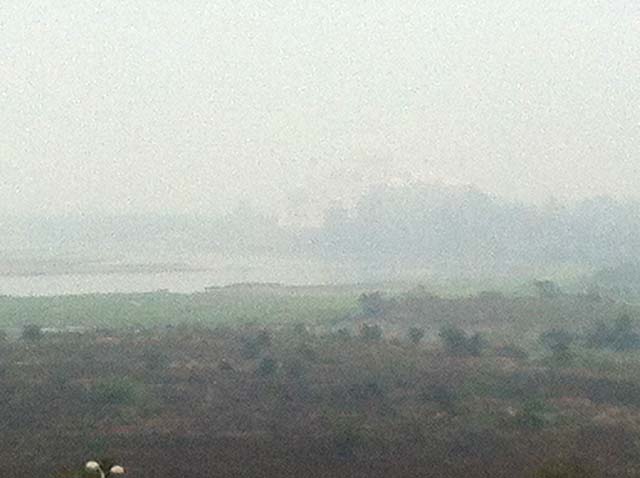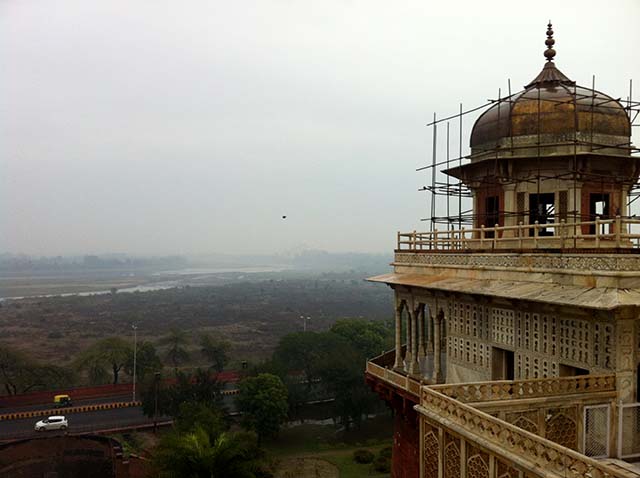Today is the day we're supposed to visit the Taj Mahal, and this is not exactly the sort of weather Bill envisioned for sightseeing there. Fortunately, Davinder has rearranged the schedule to put off our trip to the Taj until later in the day. Maybe the rain will clear up? Maybe?
So let's go instead to the Agra Fort. We'll enter through the Lahore Gate, which is not quite as grand as the Delhi Gate, which faces the city on the western side of the fort and is considered the grandest of the fort's four gates. Because the Indian military (the Parachute Brigade in particular) is still using the northern portion of the Agra Fort, the Delhi Gate cannot be used by the public. Tourists enter via the Lahore Gate. Hmph.
Nice gate, though. More from Wikipedia: Agra Fort, is a monument, a UNESCO World Heritage site about 2.5 km northwest of its more famous sister monument, the Taj Mahal. The fort can be more accurately described as a walled city. The present-day structure was built by the Mughals, though a fort had stood there since at least the 11th century. Agra Fort was originally a brick fort, held by the Hindu Sikarwar Rajputs. It was mentioned for the first time in 1080 AD when a Ghaznavide force captured it. Sikandar Lodi (1488–1517) was the first Sultan of Delhi who shifted to Agra and lived in the fort. He governed the country from here and Agra assumed the importance of the second capital. After the First Battle of Panipat in 1526, Mughals captured the fort and seized a vast treasure, including the diamond later known as the Koh-i-Noor. The victorious Babur stayed in the fort in the palace of Ibrahim and built a baoli (step well) in it. The emperor Humayun was crowned here in 1530. The Hindu king Hem Chandra Vikramaditya, also called 'Hemu', defeated Humanyun's army, led by Iskandar Khan Uzbek, in 1555 and won Agra. (Remember Humayun? We visited his tomb back in Delhi.) Hemu got a huge booty from this fort and went on to capture Delhi from the Mughals. The Mughals under Akbar defeated King Hemu finally at the Second Battle of Panipat in 1556. Realizing the importance of its central situation, Akbar made Agra his capital, arriving there in 1558. It was in a ruined condition and Akbar had it rebuilt with red sandstone from Barauli area in Rajasthan. Architects laid the foundation and it was built with bricks in the inner core with sandstone on external surfaces. Some 4,000 builders worked on it daily for eight years, completing it in 1573.
Sure hope they put up a good roof back then, because today, the place is a little wet.
Want to read more about the Agra Fort? Here you go.
Actually we found it was easier to let Davinder tell us all about it.
Now that's nice. It's the Diwan I Am (Hall of Public Audience), where the ruler held court.
Over there are barracks built by the British.
Our wet group goes to have a look.
Golly this is a dreary day.
We're getting closer to the Hall of Public Audience.
And a very impressive hall it is.
So nice, it's worth getting a little wet to take some pictures.
Let's explore the inside.
Beautiful, and almost overwhelming.
Nice gardens too.
You can read about it here.
Bill may be wet, but he's impressed by this place.
All these years, and the beauty is undiminished.
Even when it's wet.
And wow, look inside this place.
A glass palace.
Just imagine what it was like in its heyday.
Now that's interesting. What a beautiful balcony! I wonder what you can see from there?
Um, well, that's our view today. Davinder says the Taj Mahal is over there somewhere. That's what he says, anyway. Do you see it? I sure don't see it.
Ah...the internet to the rescue. Here's the view on a sunny day. Legend has it that Shah Jahan built the beautiful Taj Mahal for his wife, Mumtaz Mahal. Unlike his grandfather, Shah Jahan tended to have buildings made from white marble, often inlaid with gold or semi-precious gems. He destroyed some of the earlier buildings inside the fort to make his own. At the end of his life, Shah Jahan was deposed and restrained by his son, Aurangzeb, in the fort. It is rumoured that Shah Jahan died in Muasamman Burj, a tower with a marble balcony with a view of the Taj Mahal.
And there he would sit on his balcony, gazing across the Yamuna River at the tomb of his beloved wife. On clearer days than this.
So let's do a little exploring.
The Indian government is cleaning the place up. See the intricately carved marble window encased in mud? Well, concerned tourists, do not worry about that! You see, the mud is a cleansing agent, and when it's washed away the marble will be as white as new. That's what they say, anyway!
And we're cleaning up Shah Jahan's cupola.
And making his balcony pretty. The Indian government in 2014 finally realizes that making things look nice means more tourists, and more tourists make a better economy!
Davinder tells us all abou the place.
He told us with regret that tourists used to be able to sit on the ruler's throne, but now it's fenced off because too many people couldn't resist the urge to mark things up with graffiti.
OK, do you see the Taj Mahal over there?
Suppose we use the telephoto setting ... do you see it now?
Too bad. Shah Jahan had a great view from here. On prettier days, anyway. |


